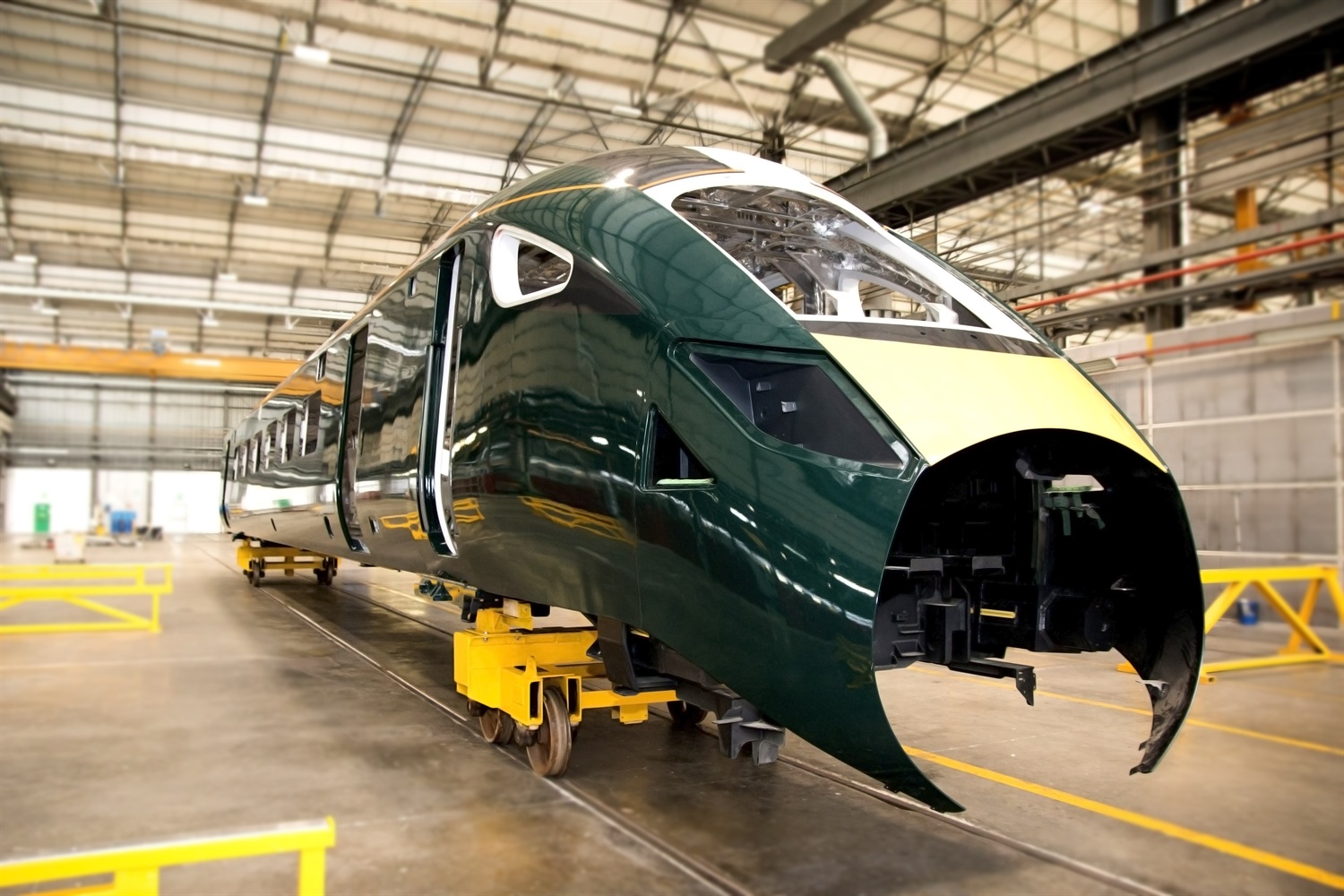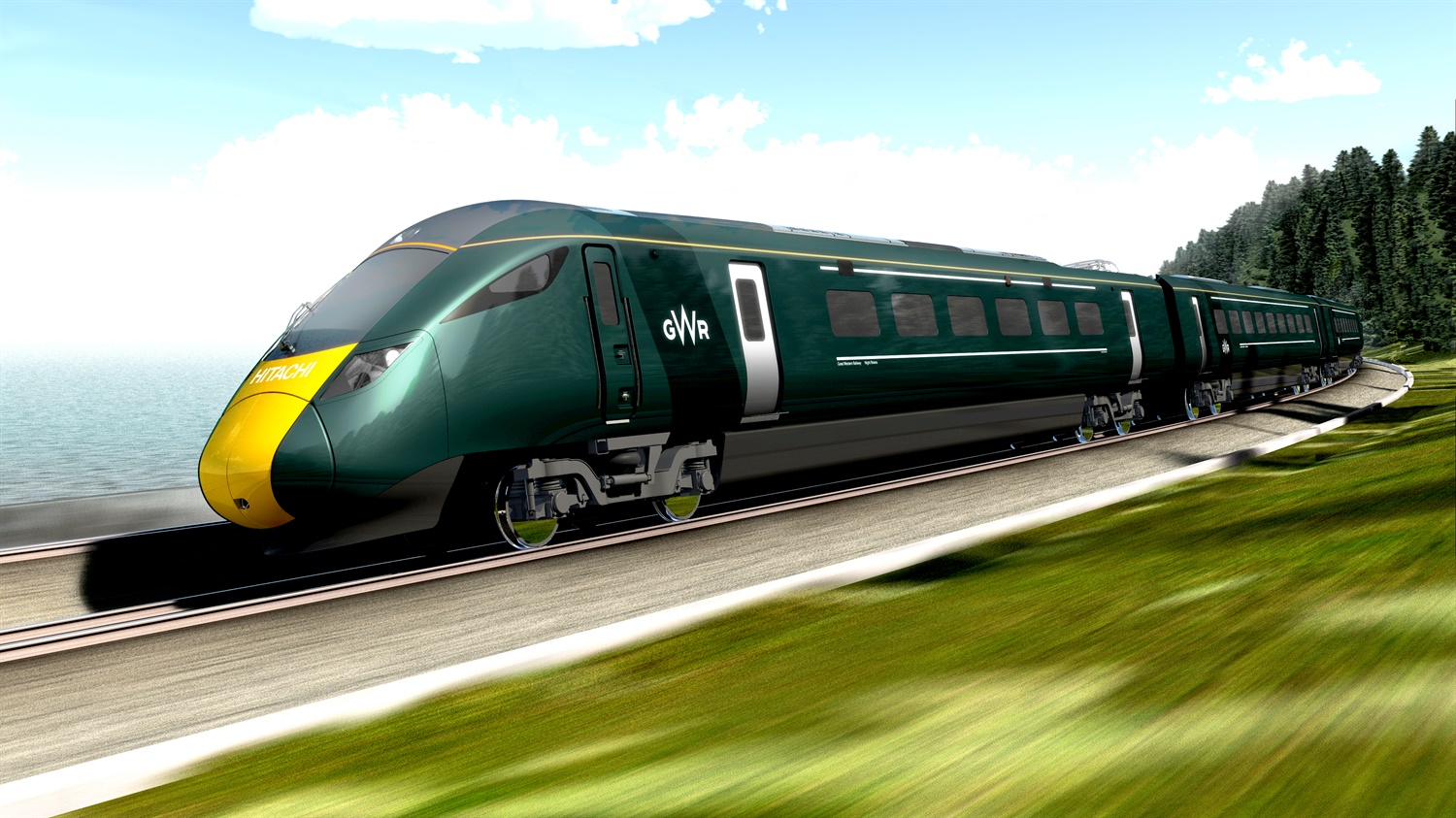09.05.17
IET fleet work moves forward at Hitachi's Pistoia plant ahead of UK delivery
It won’t be long now until the brand-new bi-mode Class 802 trains make their way from Italy to the UK’s south west coast, writes Berry Sas, project director at Hitachi Rail Europe, in an exclusive update for RTM.
In the coming years, the UK will see a host of major rail projects come to fruition. The Intercity Express Programme (IEP), Crossrail and now HS2 have all caught the public’s eye. Despite the arrival of big ticket items, it is crucial other parts of the country do not get left behind.
FirstGroup also recognised this and made the decision to invest in a new fleet of trains for Great Western Railway (GWR) services in the south west of England, a part of the country dogged with historic infrastructure issues.
Troublesome weather conditions in the region have made news headlines causing damage to infrastructure and delays to train services. The damage caused at Dawlish during the storms of 2014 will long be imprinted in the minds of passengers who faced months of disruption whilst urgent repairs took place.
For many passengers, the route connecting western counties including Devon and Cornwall to the rest of England is essential for both business and tourism. Therefore, the need for reliable and modern trains to run in adverse conditions is essential.
From 2018 this stretch of track will benefit from the new trains it needs, offering passengers a step change in journey comfort and reliability. Hitachi is supplying 36 Intercity Express trains for GWR to connect London to key regional hubs such as Exeter and Plymouth
Passengers travelling to the very south of the country will benefit from more seats, more luggage space and better on-board technology.
Hitachi’s renowned build quality and engineering will ensure a smooth ride for passengers on long journeys, truly befitting of the 21st century.
The old ‘slam doors’ will be replaced with automatic intelligent controlled pneumatic-powered doors, a symbol of modernisation which will be instantly recognisable to passengers. The service connecting London to Plymouth and Penzance could also become up to 14 minutes quicker.
My role is to make sure passengers get these trains on time and in top condition, so they can enjoy all the benefits that come with new trains.

Dawlish proof
From the train design through to build and testing, the task of supplying trains for operating within an area renowned for its stormy weather conditions comes with its own unique challenges.
The new fleet of trains has been designed with this unique challenge in mind.
Each of the 36 Intercity Express trains running to Devon and Cornwall will be bi-mode, meaning they can run on electric or diesel power, switching power source seamlessly mid-journey. Even whilst modernisation of the Great Western route takes place, and with long stretches of the track containing steep hills with no overhead lines, passengers will be able to benefit from these new trains operating on diesel power when electric power is unavailable. Our trains are fitted with Rolls Royce MTU engines to ensure they can continue at pace when on non-electrified sections of track.
Of course, the question we always get asked about these new trains is whether they are designed to cope with sea water waves crashing in over the coastal sections of track.
Firstly, our brake resistor (which slows the train down by converting electrical energy under braking to heat) is arranged on the roof of the carriages on a raised platform. This prevents water pooling around the brake resistor which might otherwise cause damage.
The work between GWR and Hitachi engineering teams has been a collaborative approach in understanding the risks of operating along the Dawlish coast to find solutions. Even before the first test train arrives in the UK, considerable work has been done to ensure the trains can withstand the challenging weather conditions.
Building in Tuscany
FirstGroup wanted GWR passengers in Devon and Cornwall to experience new trains as soon as possible. With our UK manufacturing facility in Newton Aycliffe at full capacity, we called in our colleagues at Hitachi Rail Italy. This is just one of the many benefits of being part of a global company with a global outlook on manufacturing.
Our sister manufacturing facility in Pistoia, situated close to Florence, was able to accommodate the order. Hitachi’s international structure means that we can cater for large orders concurrently using a range of sites.
Pistoia has just finished building the ETR1000 for Italy’s high-speed line, a train which is billed as industry-leading. Therefore, we know our trains for Devon and Cornwall will incorporate all the hallmarks of Hitachi quality.
Bodyshell panels will be manufactured in Japan using Hitachi’s signature friction stir welding technology pioneered on bullet trains. Once the panels arrive in Pistoia, they will be reformed into a carbody before being fully fitted out as completed train carriages prior to testing on the UK rail network.
Earlier this year work began in Pistoia on finishing the first set of delivered bodyshells. We are expecting the arrival of the first complete Italian-built train by the end of this year.

Rigorous route testing
Naturally, there is already excitement building about the arrival of pre-series test trains from Japan to the UK this summer. They will come into Southampton port much like their IEP predecessors.
Once the test trains arrive they will be primarily housed at our Stoke Gifford depot, situated next to Bristol Parkway station. A rigorous and methodical test programme will take place along sections of the GWR routes. We will be testing the trains along the coastal stretches of track.
The train will be running day and night up until it enters passenger service, stopping at each platform and station to ensure compatibility.
In all, we will have three pre-series test trains in operation from this summer onwards – 2x5 cars and 1x9 car. Each will be painted in GWR’s green livery with a yellow nose cone.
Collaboration at the heart of delivery
The task of delivering these new trains for GWR and their passengers is well underway. To achieve our end goal of all trains in service by the end of 2019 we will be working closely with GWR, as well as with the trains’ owner and our finance partner Eversholt Rail.
We’ll also be working closely with colleagues at Network Rail to ensure our trains can travel on their routes. It also goes without saying that partnerships with suppliers will be essential to keep the trains moving and build schedule on time.
For the team at Hitachi these are undoubtedly exciting times. Within a few months, the new trains will be seen running around sections of track in the UK. Thanks to FirstGroup’s investment and an industry-wide effort to upgrade our rail network, passengers in this picturesque part of the country will receive the modern trains they deserve.